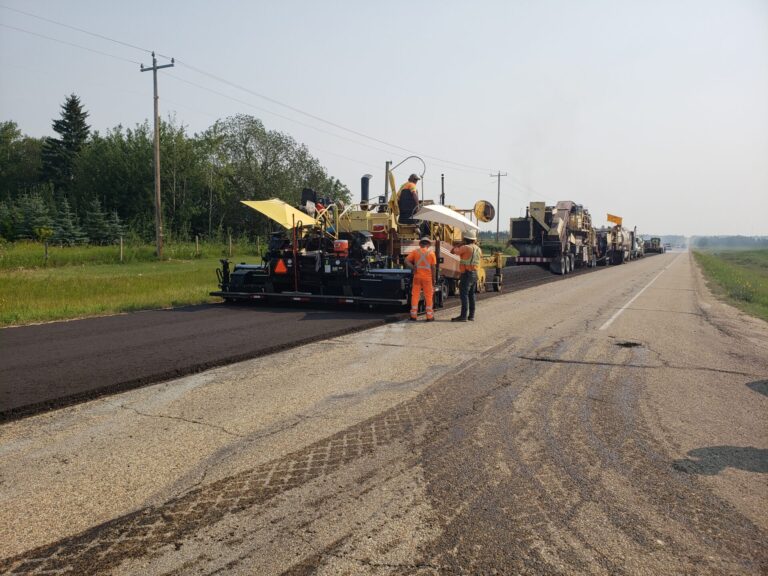By Catherine Gleason-Mercier and David Leck
Long-standing practice on Canadian construction projects has been to structure contractual relationships in a pyramid. In this regard, the construction pyramid brings together (in a loose sense of the word) a variety of parties while limiting contractual rights and responsibilities to a specific tier of the pyramid with a specific contracting counterparty.
By way of example, the owner contracts directly with the general contractor (by way of a “prime contract”), and in doing so, generally limits its liability to claims from the general contractor. In turn, the general contractor enters into separate contracts with its subcontractors and/or suppliers (the “subcontracts”), generally in a manner that satisfies the general contractor’s obligations under the prime contract. Further down the contractual pyramid, subcontractors and suppliers may enter into direct contracts with sub-subcontractors and sub-suppliers, and the pyramid thus continues.
When a subcontractor has sustained unintended losses, allegedly caused by the conduct of the owner such as project delays or untimely design changes or through other unanticipated events such as events of force majeure, a subcontractor may have a claim against the general contractor for those losses notwithstanding that the losses are not the result of the conduct of the contractor. The question then becomes how a general contactor can resolve the subcontractor claim while nevertheless claiming against the owner for such a claim.
This article discusses the possible risks faced by general contractors when settling a subcontractor’s claim while advancing a claim against the owner for the subcontractor’s losses, also known as a flow-through claim. By way of summary, the flow-through claim is an efficient and appealing solution for both general contractors and their subcontractors when faced with a potential owner-caused issue; however, such an approach must be carefully considered and appropriately framed in order to be successful.
What is a flow-through claim?
Generally speaking, a flow-through claim arises when a general contractor advances a claim against an owner seeking compensation for the losses of its subcontractor (who has claimed against the general contractor). Flow-through claims are frequently used as a means for general contractors to seek recompense upon settling the subcontractor’s claim as between the general contractor and subcontractor only.
It bears noting that a general contractor may seek to flow-through different types of claims provided that the general contactor can establish that the owner is the party at fault or that compensation is due as a result of specific provisions in the prime contract. A common flow- through claim is often grounded in allegations of owner caused delay.
Alternatives to flow-through claims
A general contractor is of course not required to resolve its subcontractor’s claim via a flow-through claim against the owner. Instead, the general contractor could settle the subcontractor’s claim outright in respect of only those losses for which the general contractor may be solely responsible. Also, the general contractor could choose not to settle and defend the subcontractor’s claim while bringing a third-party claim against the owner for contribution and/or indemnity in respect of any losses that the general contractor believes is the responsibility of the owner.
One challenge with the first approach is that if the general contractor attributes fault to the owner for any or all of the losses advanced by the subcontractor, then the general contractor may not be willing to settle with the subcontractor in advance of any settlement with the owner.
The second approach is burdened by the fact that the general contractor would face litigation on two fronts—as a defendant against the subcontractor and as a plaintiff against the owner. This approach can be costly and time-consuming. For example, the general contractor may be required to attend additional examinations for discovery and prepare additional court documents if it finds itself advancing complex third party claims against the owner.
As a result, the flow-through claim remains an appealing option for general contractors facing claims from subcontractors.
Recent treatment of flow-through claims
Until recently, there have been few decisions by Canadian courts in respect of subcontractor flow-through claims. However, the recent decision in Walsh Construction v. Toronto Transit Commission (“Walsh v. TTC”) provides some illustrative guidance with regards to advancing such claims.
In Walsh v. TTC, advancing a flow-through claim without the direct involvement of a subcontractor proved fatal to both the general contractor and some of its subcontractors.
In this case, the general contractor Walsh Construction (“Walsh”) advanced a number of claims against the owner, Toronto Transit Commission (“TTC”), arising out of the construction of the Steeles West Subway Station in Toronto. Amongst those claims were two classes of claims brought by Walsh on behalf of its subcontractors (the “Flow-Through Claims”).
Notably, the Flow-Through Claims did not arise from existing claims by the subcontractors against Walsh—i.e. these were not third-party claims brought by Walsh against TTC. Rather, Walsh entered into agreements with the subcontractors to resolve the Flow-Through Claims as between themselves only and subsequently sought compensation for the Flow-Through Claims from TTC.
In considering these claims, the Court described Walsh’s agreements with its subcontractors as follows:
Assignment Liquidating Agreements—With some subcontractors, Walsh paid “an amount that represents all of the contract payments due and payable to the subcontractor” in exchange for an assignment of the subcontractors’ claims to Walsh and a release of liability; and
Non-Assignment Liquidating Agreements —With other subcontractors, Walsh again paid “an amount representing the contract payments due and payable to the subcontractor” but instead in exchange for a release of Walsh under the condition that “[if] Walsh were able to recover anything from TTC with respect to the subcontractor claims, it was to pay it to the subcontractor less a percentage for overhead, markup and costs incurred.” In the event of a global recovery, the subcontractors would receive a pro-rated recovery.
Consequently, the agreements that Walsh entered into with its subcontractors placed the onus on Walsh to recover damages arising out of the Flow-Through Claims from TTC. This approach proved problematic, as the Court refused to accept that TTC—as the owner—should be found liable to Walsh for the subcontractor’s losses. Specifically, the Court described the Flow-Through Claims as “untenable” and noted that “the attempt to place liability upon the owner for the subcontractor’s damages, where the owner has not contracted with the subcontractor and where the contractor has effectively removed itself from the picture, is not right.”
The Court’s rationale regarding the Subcontractor Agreements effectively barred the Flow-Through Claims as a result of the Subcontractor Agreements.
Specifically, with regards to the Assignment Liquidating Agreements, according to the Court, Walsh could only recover the subcontractors’ losses from TTC if Walsh admitted liability, thus establishing the subcontractors’ losses as its own. However, an admission of liability in respect of Walsh’s delay claim would undercut any fault on the part of TTC and could preclude recovery entirely.
As acknowledged in an earlier decision (Ledcor Construction Ltd. v. Attorney-General of Canada) relied upon by the Court in Walsh v. TTC, “in the absence of any privity between the subcontractors and [the owner], they have no right of action against [the owner], particularly in these instances where claims the subcontractors may have against the main contractor would have to arise from the negligence of the main contractor, but the cause of action, as alleged by the contractor, is delay on the part of the owner.”
Likewise, in respect of the Non-Assignment Liquidated Agreements, the terms of the agreement itself proved fatal. The very fact that Walsh would only be contractually liable to pay its subcontractors for the subcontractor’s losses if TTC was held liable to those subcontractors is contrary to a finding that TTC is liable to Walsh directly for those same losses.
This finding echoed an earlier decision (Ledcor Construction Limited v. Carleton University) where the Court held that “[the general contractor’s] attempts to ensure that it incurs no liability to its subtrades for delay unless it recovers from [the owner] creates a circular argument which makes it impossible to prove [the general contractor] itself has suffered the added costs sustained by the subtrades.”
Importantly, the Walsh v. TTC decision remains under appeal and the Canadian construction bar vigilantly awaits the outcome of that appeal, including in respect of flow-through claims.
Ultimately, flow-through claims present a potential challenge to general contractors. As tempting as at it may be to resolve subcontractor claims early, the terms of such settlements are critical in determining whether the general contractor will be successful in seeking to flow-through such settlement costs to the owner.
Catherine Gleason-Mercier and David Leck are Partners in the Construction and Infrastructure Practice Group at Singleton Urquhart Reynolds Vogel LLP.
[This article appeared in the March/April 2025 issue of ReNew Canada.]
Featured image: In Walsh v. TTC, the general contractor advanced a number of claims against the owner, arising out of the construction of the Steeles West Subway Station in Toronto. (Getty Images)











